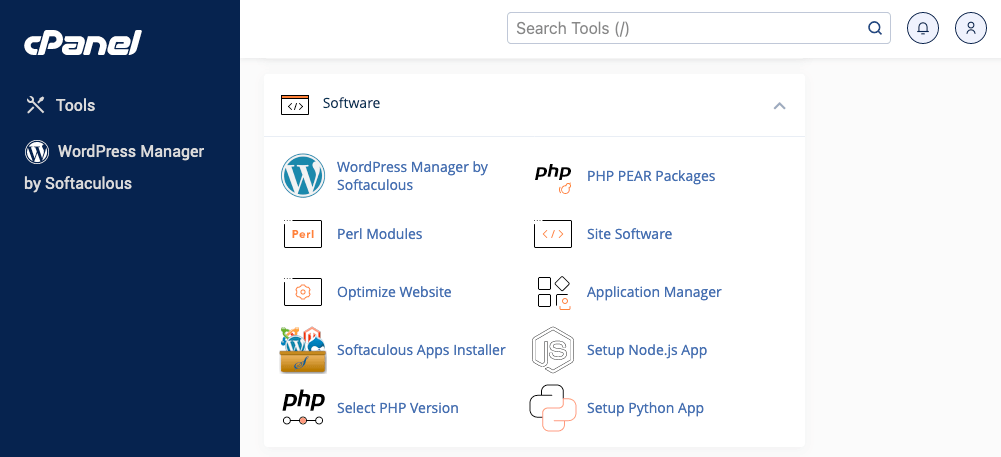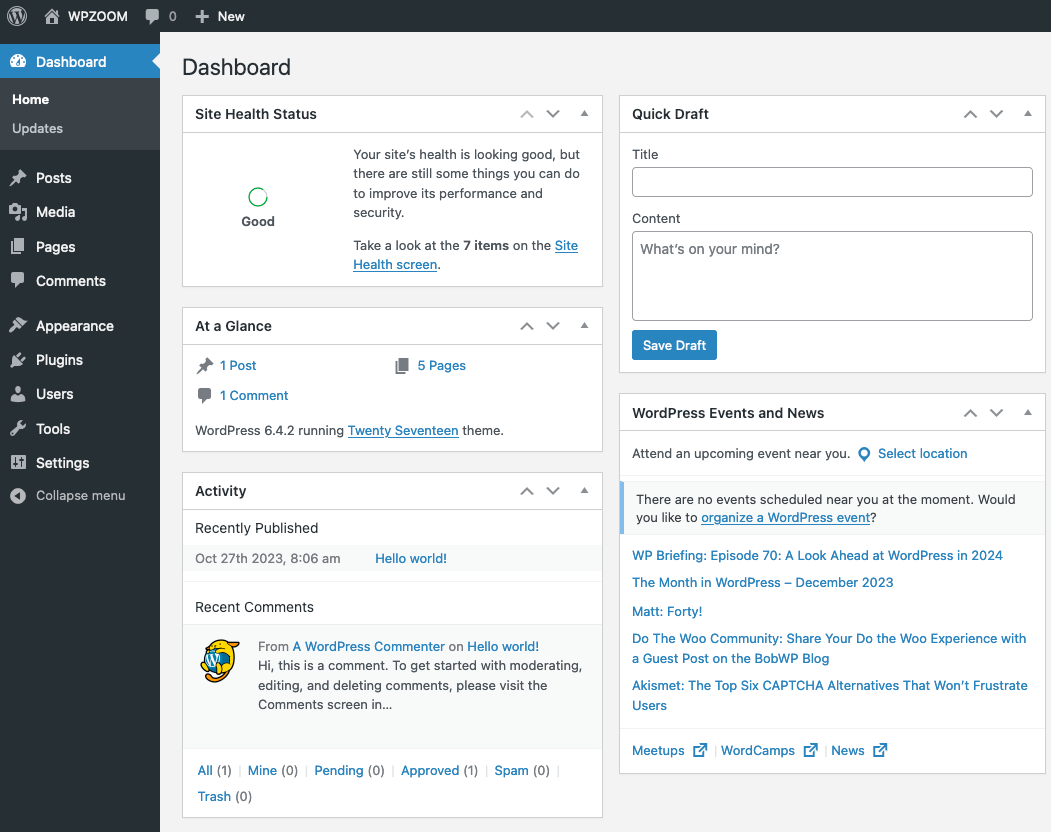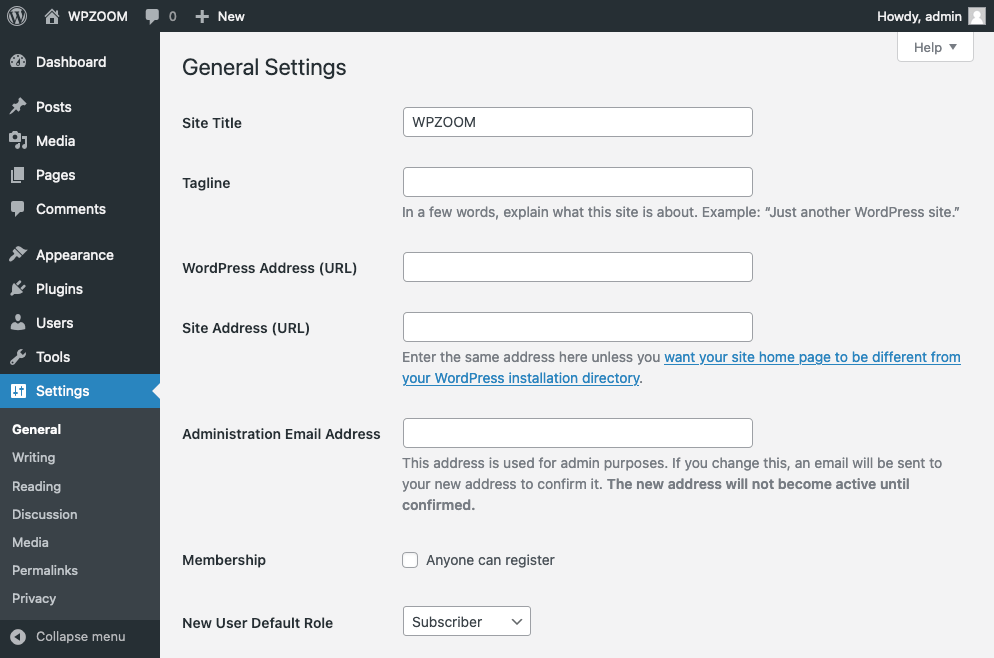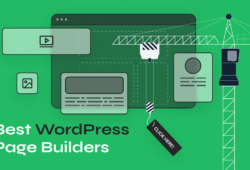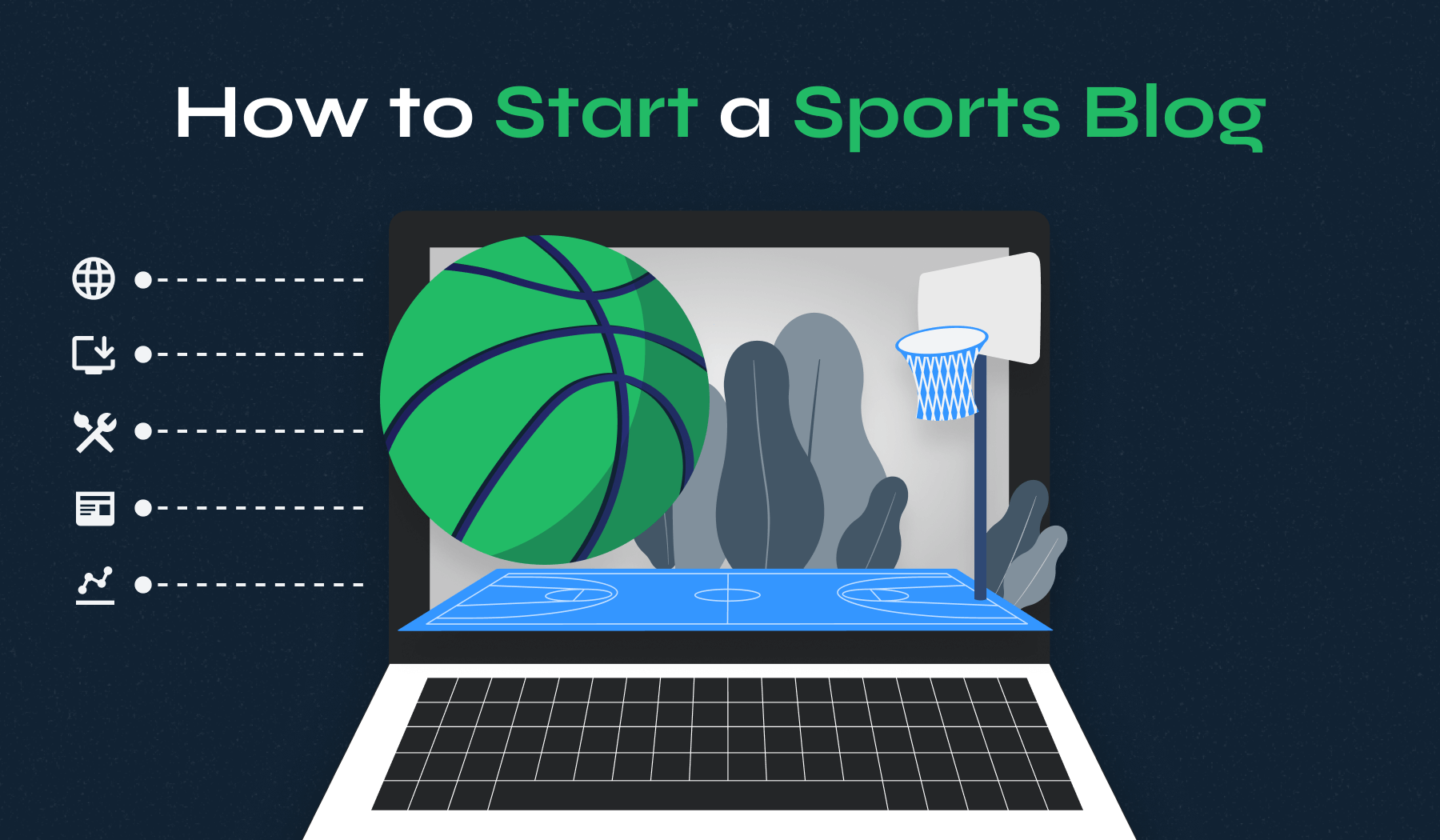
As sports enthusiasts, we constantly dream of becoming more involved in the sporting world. From going to live events to see our heroes to sharing our thoughts online, we love getting into as much detail as possible with our passion. Learning how to start a sports blog can be a great way of keeping our passion alive and making a nice income.
Sports blogging is much more complex these days and can cover a wide range of sports and niches. As long as you are passionate about one particular sport or all of them, your voice will matter if you promote it healthily.
Starting your sports blog journey requires following some essential steps to be a long-lasting and successful project.
Quick Guide to Starting a Sports Blog
Here’s a quick summary of the critical steps involved in creating a sports blog:
- Step 1: Identify Your Sports Blog Niche
- Step 2: Choose a Name and Secure Your Domain
- Step 3: Select a Hosting Provider
- Step 4: Install WordPress
- Step 5: Select a WordPress Theme
- Step 6: Customize Blog Settings
- Step 7: Install Essential Plugins
- Step 8: Plan and Create Captivating Posts
- Step 9: Promote and Expand Your Sports Blog
- Step 10: Make Money With Your Sports Blog
Now, explore each aspect in more detail to ensure you’re well-equipped to make your sports blog successful.
10 Steps to Start a Sports Blog: A Detailed Guide
The steps to create a successful sports blog are relatively straightforward. Still, some parts are slightly unintuitive, and this guide will make the whole process much more manageable.
1. Identify Your Sports Blog Niche
As you know, there are hundreds of sports out there. Sports blogging can focus on different aspects of each particular sport. However, given the amazing increase in popularity surrounding e-sports, things can quickly become rather overwhelming.
Becoming a sports blogger starts with finding what you are truly passionate about and what successful sports blogs need to improve.
Finding your niche will play a crucial part in the success of your sports blog. Tackling the giants in the industry is never a good idea when you are just getting started. So, instead of becoming a blogger who tackles too many sports, choose one topic you are most passionate about.
Here are some ideas that might come in handy when trying to pick out your niche:
- Extreme sports gear
- E-sports
- Epic running trails around the world
- Fantasy football leagues
While these examples can be good choices, we are sure that your ideas will be better, especially considering that they will be based on what you are most passionate about in sports.
2. Choose a Name and Secure Your Domain
After realizing the ideal sports niche for you and choosing the suitable sports-related topics you will focus on, you must also find the right name for your blog. This name should be:
- Easy to remember
- Short
- Relevant to the niche
- Catchy
Whether you choose to use a clever name through wordplay or decide on a more straightforward approach, you must buy your domain name.
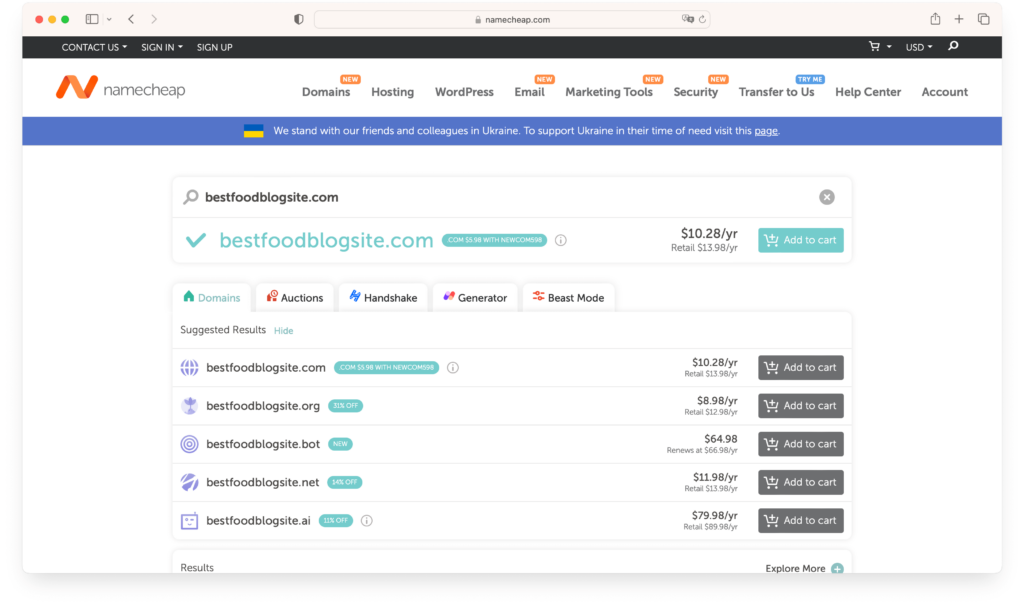
Buying a domain is simple and quick, and the costs are generally very low, depending on the type of name you want to use. Make sure to be as exact as possible and find a way to match your domain name to your blog’s name. This will give your trustworthiness a clear boost with your visitors.
3. Select a Hosting Provider
You must now consider the hosting provider that will keep your website online. There are a huge number of available hosting providers, and this variety can be both a good and a bad thing.
Too many choices can make things difficult if you are unsure what to look for in a hosting provider. Luckily, we know a thing or two about the topic, so our list of top hosting providers may help.
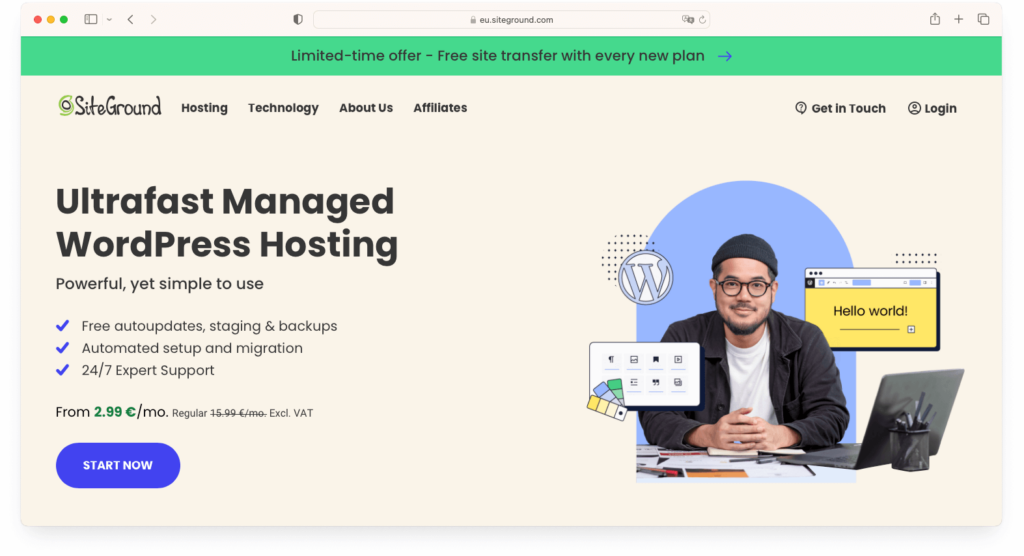
Balancing costs and performance is a fine line to walk when choosing a hosting provider, and we can relate to your desire to cut costs as much as possible, especially when you are just starting this journey. Here are some of the cheapest hosting providers you can choose without compromising quality or performance.
4. Install WordPress
While there are decent alternatives, WordPress remains one of the best and most commonly used CMS and site builders. There are many reasons to choose WordPress as a blogging platform for your sports blog, including ease of use, accessibility, and security.
Installing WordPress is easy and can be done by following a couple of easy steps. Of course, the process can be slightly different depending on your hosting provider and the control panel you use, but the general sequence of events should be as follows:
- Log into Your Hosting Control Panel. Whether that is cPanel or something else, logging into it will be easy to do from your hosting account.
- Locate the WordPress Installer and Start the Installation Process. You can do this with the one-click installer generally offered through services like Softaculous. You can easily find it through the search in your control panel.
- Enter Your Site Information. Before the installation begins, you must fill out some information about your site. The site name, a title tag, and your login information are mandatory.
- Access Your WordPress Dashboard. Use the login data you created in the previous step to log into your WordPress dashboard as soon as the installation is completed.
5. Select a WordPress Theme
How your sports blog looks and functions depends on several factors, but one of the most important ones is the theme you will use. A theme can make or break a sports blog, so you should not take this decision lightly.
There are thousands of WordPress themes, and selecting the best one for your purposes will make a huge difference. That is why choosing the WordPress theme needs to be treated seriously.
Some of the best themes you can choose from when it comes to creating your WordPress blog are:
Each has its own benefits and disadvantages, but none is as well suited for a popular sports blog as the Indigo theme. This theme was designed as a starting point for magazine-type blogs and offers many layout options.
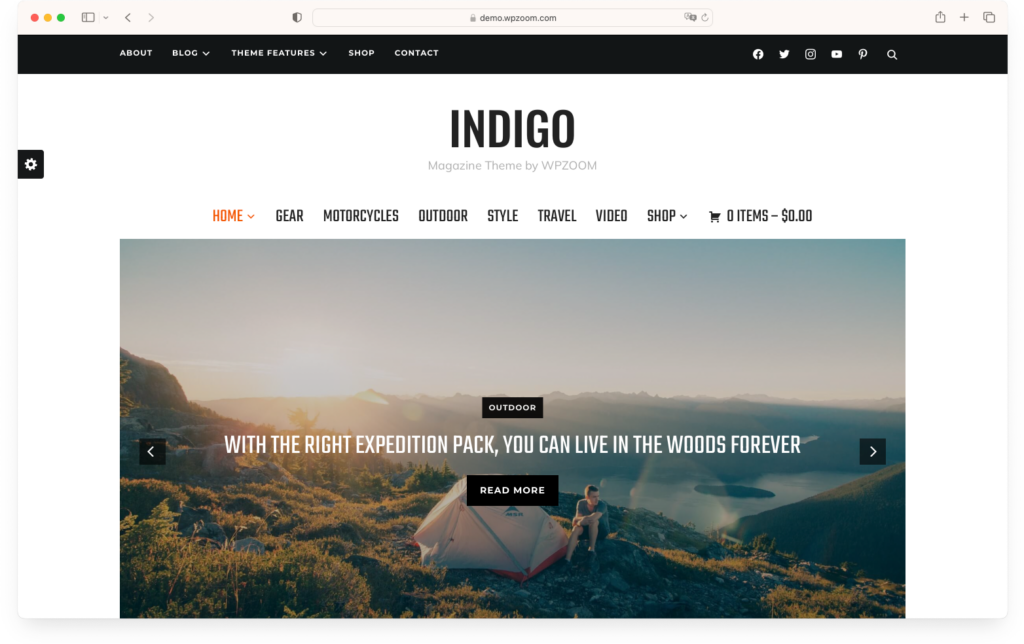
That way, you will have a lot of freedom in designing your website and making it as good-looking and functional as you please. You can select the layout that best fits your style and decide whether to focus more on the written content or imagery.
Considering that sports are spectacular both in terms of analysis and opinions and visually, you will probably need to find a way to balance the two. Installing the WordPress theme is easy if you follow a couple of steps.
6. Customize Blog Settings
With your theme installed, you can start customizing your site and making it look how you want it to. Even though this whole process might seem somewhat intimidating initially, if you follow a couple of simple steps, you will surely get the hang of what needs to be done.
Of course, going into the finer details of site customization will require more knowledge and a better understanding of WordPress. But the steps below should be more than enough to get you started.
- Personalize Your Site Title and Tagline from WordPress Settings. This information is essential for your readers and will allow you to introduce yourself and your blog’s purpose. You can also use this to select the right timezone for your blog and explain how the subscription settings will work.
- Design an Intuitive Navigation Menu from Appearance > Menus. A comprehensive navigation menu will make it much easier for visitors to access the necessary information. This menu will play a massive role in your sports blog, allowing you to make your content easily accessible.
- Select Your Homepage Layout from Settings > Reading. Sports fans are not exactly famous for being the most patient in the world. That is why your homepage will be an essential part of how you will build your relationship with your visitors. First impressions matter, so make sure to make the homepage shine.
- Manage Comments Effectively from Settings > Discussion. Being in touch with your audience is essential, but you must balance constructive discussion and spam or hateful comments between fans. Moderating comments might be a good idea, considering how heated discussions about sports can get.
- Optimize Your URL Structure from Settings > Permalinks. Customizing your URLs and making them as relevant and user-friendly as possible will increase the trust you inspire in your visitors and the search engines that crawl your site.
Completing all the tasks above before your site goes live will make you look serious and professional.
7. Install Essential Plugins
WordPress plugins are a huge part of your blog. Sports blogging is a very interactive world, and you may be tempted to include a wide variety of impressive technology on your site. Animations, pop-ups, social media plugins, and e-commerce solutions are just a couple of examples.
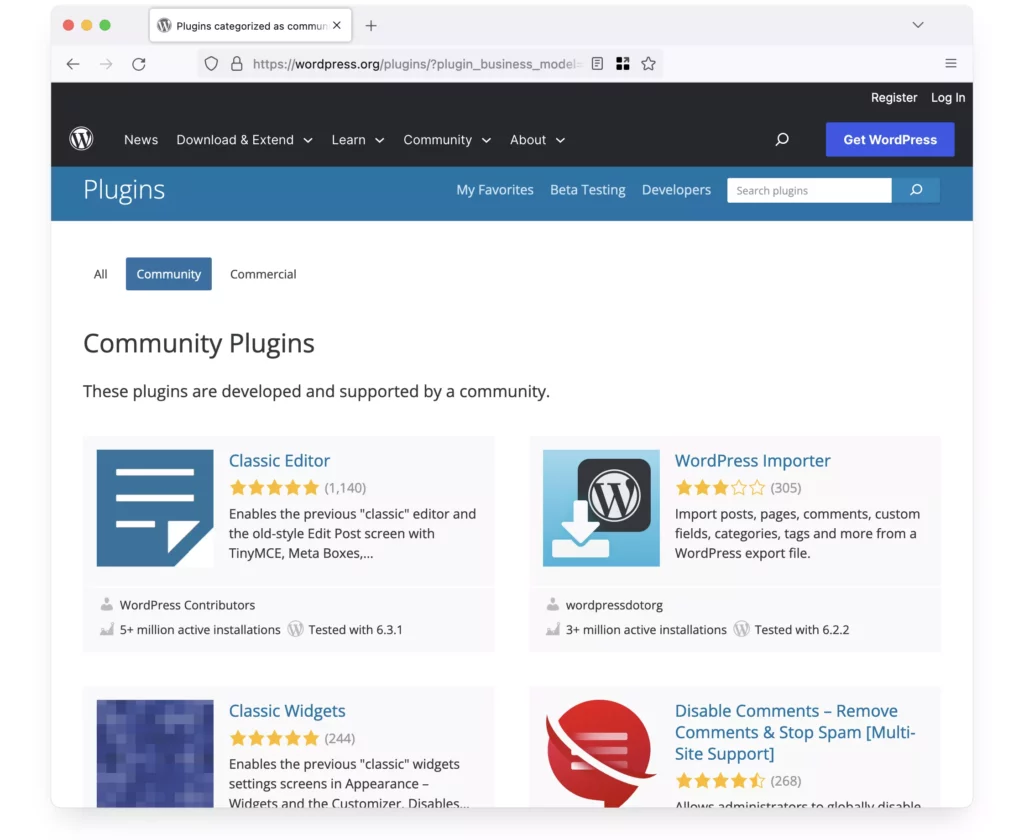
The key to learning how to start a sports blog and keeping it healthy will be finding the balance between using the number of plugins you use and their impact on your site’s performance and security. WordPress plugins are fundamental building blocks for your site, but each has its footprint on resources.
Since countless plugins are available, you will benefit from our curated list of the most important and top-performing WordPress plugins. If you follow our advice and only use the essential plugins that truly bring more advantages than drawbacks, you will be able to take pride in having a quick-loading and secure website.
Installing WordPress plugins is a piece of cake and can be done quickly with just a few clicks.
8. Plan and Create Captivating Posts
Your blog will be as valuable as the content you post. That means that the one thing that your visitors will always notice is low-quality content. Readers will sometimes get over technical imperfections, “forgive” slower loading times, and even accept that your visuals are subpar now and then.
That is if your content will satisfy all their needs and entice and excite them. Planning your content and timing your posts to match the suitable periods of the year is essential.
The great news is that sporting events have a very clear schedule, and you can easily and well ahead of time plan your content accordingly.
Your content strategy needs to consider all the important competitions in the niche you are targeting, and you will always need to consider the seasonal aspects of the sports you are focusing on.
9. Promote and Expand Your Sports Blog
You must promote your content to reach as many people as possible and meet its potential. Promoting your blog will be a form of art to a certain extent; there is much to learn on the topic. But when you master the necessary techniques and strategies, the results will be impressive.
The first thing you need to think about is Search Engine Optimization. Optimizing your content for search engines and building your website with the SEO best practices in mind will undoubtedly pay off in the long run. SEO results won’t come easy and won’t bring instant traffic, but focusing on this strategy will be a great way to secure a comfortable future for your sports blog.
Another way to promote your content and expand the reach of your sports blog is through newsletters. If you develop a good following and build a database, you can keep in touch with your audience and let them know when something important happens on your sports blog.
As a starter in the sports blogging world, the safest and quickest way to promote your platform is through social media. The best thing about social media is that it is free, and you will instantly gain access to an audience. The results will come a lot quicker, and you will get some traffic on your site right away, especially if you make your sports blog easily shareable on social media platforms using the right widget plugin.
Instagram can play a huge role in your social media strategy, especially if you are targeting mainly audiences interested in sports visuals. In that case, you will need a special Instagram widget plugin to make things easier.
10. Make Money With Your Sports Blog
Even if you start a sports blog as a passion project or a side gig to supplement your income, there are some strategies for you to monetize all the effort you put into it. While there are many more ways to earn an income with your blog, mainly depending on your niche, creativity, and entrepreneurial spirit, here are some basic ideas.
- Display Ads: Ads are the most basic and straightforward way to monetize your blog’s traffic. By signing up with platforms like Google AdSense, you can earn every time a visitor sees an ad on your blog.
This strategy can earn you a lot of money, but you will need tons of traffic to make enough through display ads alone. - Affiliate Marketing: Affiliate marketing is another excellent solution and will require more involvement from your side to a certain extent. Depending on your sports blog’s niche and how you interact with your target audience, you must understand what your readers will most likely buy (sports equipment, clothing, online tickets, etc).
You earn a commission through affiliate marketing every time a visitor buys a product through your affiliate link. Establishing yourself as a trustworthy source of information is important because this will increase the likelihood of your audience trusting you when you recommend a specific product. - Sponsored Content: Sponsored content is a great alternative to display ads. Although adding the ads will be more involved and not as simple, the great news is that you can choose exactly what businesses you will promote.
- Digital Products: As a sports blogger, you also have an excellent opportunity to sell various digital products. For example, you can invite your audience to subscribe to a paid podcast you host and use to discuss your favorite sports events.
Alternatively, you can sell access to more in-depth statistical analysis of the sport you focus on.
Bottom Line
Learning how to start a sports blog can be both challenging and rewarding. It all depends on how you approach the whole process and how much time and effort you invest in this project. If you want to have a future as a sports blogger and make enough of an income to support yourself, we recommend doing some additional research and expanding your knowledge with the following:
- WordPress SEO: As mentioned above, SEO is an excellent tool for promoting your blog but requires a lot of work from the start and ongoing efforts to follow best practices. Read our article to learn the essentials.
- WordPress Speed Optimization: A slow site will not be appreciated by either the audience or the search engines. Learn everything you need to know about optimizing your site for performance.
- How to Protect Your WordPress Site: Keeping your site secure is essential both for your content’s sake and for your visitors’ data. Learn the basics to make sure your site is safe.
